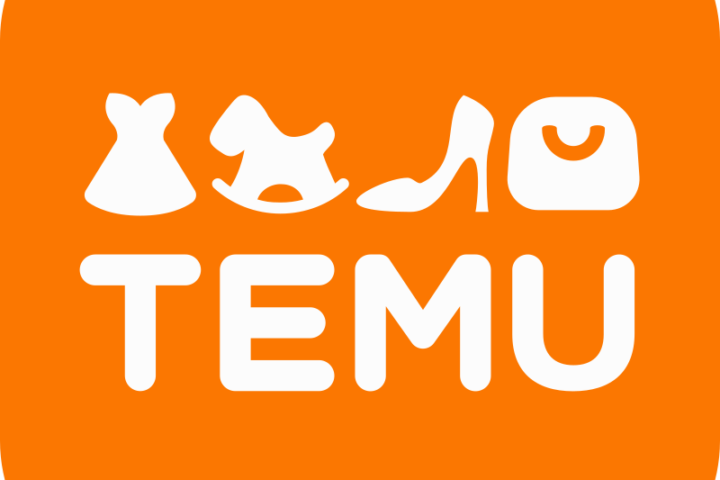Introduction to Competitive Analysis
Competitive analysis is a critical process that involves evaluating the strengths and weaknesses of current and potential competitors. This strategic practice is essential for businesses aiming to understand their market position and identify opportunities for growth and improvement. By systematically analyzing competitors, companies gain valuable insights into market trends, customer preferences, and potential threats or challenges within their industry.
The importance of competitive analysis cannot be overstated. It serves as the foundation for strategic planning and decision-making, providing a clear picture of where a business stands relative to its competitors. This understanding enables companies to pinpoint unique selling propositions, differentiate their offerings, and capitalize on market gaps. Furthermore, competitive analysis helps businesses anticipate competitors’ moves, allowing for proactive strategy adjustments to maintain or enhance their market position.
In addition to identifying immediate competitive threats, competitive analysis also uncovers broader industry trends and shifts. By staying informed about these changes, businesses can adapt to evolving market conditions and customer needs more effectively. This adaptability is crucial for long-term success and sustainability in a dynamic business environment.
Moreover, competitive analysis supports the development of targeted marketing strategies. By understanding competitors’ marketing tactics and customer engagement practices, companies can refine their own approaches to better attract and retain customers. This process not only boosts competitive advantage but also enhances overall business performance.
Overall, competitive analysis is an indispensable tool for any business striving to achieve and maintain a competitive edge. It provides the necessary insights to make informed decisions, identify opportunities for innovation, and develop strategies that outpace the competition. In the following sections, we will delve deeper into specific strategies and insights that can be leveraged through effective competitive analysis.
Identifying Competitors
Identifying competitors is a fundamental step in executing a thorough competitive analysis. Effective identification encompasses both direct and indirect competitors, providing a comprehensive view of the competitive landscape. Market research stands as a pivotal technique in this process. By analyzing market trends, companies can pinpoint businesses offering similar products or services. Moreover, customer feedback serves as a valuable resource. Through reviews and surveys, customers often reveal insights about alternative options they consider, thus highlighting potential competitors.
Industry reports further enrich the identification process. These reports offer detailed analyses of market dynamics and key players, revealing both established and emerging competitors. Recognizing potential competitors is as crucial as identifying current ones. Potential competitors may not pose an immediate threat, but their market entry could disrupt the status quo. Therefore, businesses must remain vigilant about startups and companies from adjacent industries that might diversify their offerings.
The importance of recognizing both current and potential competitors cannot be overstated. Current competitors influence market share and pricing strategies, while potential competitors could introduce innovative solutions that redefine the market. A comprehensive competitive analysis, incorporating these identification methods, equips businesses with the foresight to adapt and strategize effectively in the face of evolving competition.
Analyzing Competitors’ Strengths and Weaknesses
Analyzing competitors’ strengths and weaknesses is a fundamental aspect of competitive analysis. This process involves a meticulous examination of various factors, including product quality, market share, pricing strategies, customer service, and brand reputation. By understanding these elements, businesses can identify opportunities and threats within their industry, allowing them to strategize effectively.
One of the most comprehensive tools for this assessment is the SWOT analysis framework. SWOT stands for Strengths, Weaknesses, Opportunities, and Threats. This method provides a structured approach to evaluate internal and external factors influencing competitors. For instance, strengths might include superior product quality or a robust market presence, while weaknesses could be related to high pricing or poor customer service.
Product quality is a critical factor in competitive analysis. Companies should compare the features, durability, and overall performance of their competitors’ products. High-quality products that consistently meet or exceed customer expectations can be a significant competitive advantage. Conversely, identifying flaws or areas where competitors’ products fall short can provide valuable insights into market gaps and opportunities for differentiation.
Market share analysis offers another dimension to understanding competitors. Evaluating the proportion of the market controlled by competitors helps gauge their dominance and influence. Tools like market share reports and industry surveys can provide quantitative data to support this analysis. A company with a substantial market share may indicate strong consumer trust and effective marketing strategies, while a smaller share might suggest limited reach or brand recognition.
Pricing strategies are also crucial in competitive analysis. Companies need to assess how competitors price their products and services, considering factors such as cost leadership or premium pricing. Understanding these strategies enables businesses to position their offerings appropriately and develop competitive pricing models.
Customer service is another essential component. Analyzing competitors’ customer service involves reviewing feedback, ratings, and testimonials. Exceptional customer service can be a significant differentiator, fostering customer loyalty and positive brand perception.
Lastly, brand reputation plays a vital role. A strong, reputable brand can command higher customer trust and loyalty. Tools like social media monitoring and brand sentiment analysis can provide insights into competitors’ brand health and public perception.
In summary, competitive analysis through evaluating strengths and weaknesses using frameworks like SWOT analysis enables businesses to make informed strategic decisions, enhancing their competitive positioning and long-term success.
Understanding Competitors’ Strategies
Uncovering competitors’ business and marketing strategies is a crucial aspect of competitive analysis. Identifying these strategies allows businesses to gauge their own positioning and adapt accordingly. One effective way to gather this information is through the examination of annual reports. These documents often provide detailed insights into a competitor’s financial health, strategic priorities, and market positioning. Additionally, annual reports may disclose information about new product developments, market expansion plans, and other significant business activities.
Press releases are another valuable source of information. They offer timely updates on a competitor’s milestones, partnerships, product launches, and other noteworthy achievements. By keeping track of these announcements, businesses can stay informed about their competitors’ latest initiatives and strategic shifts. Social media platforms also serve as a rich repository of information. Analyzing competitors’ social media activities can reveal their engagement strategies, customer interactions, and promotional tactics. This real-time data can provide a deeper understanding of how competitors are positioning themselves in the market.
Understanding competitors’ target audiences is equally important. Identifying who competitors are targeting can help businesses refine their own audience segmentation and tailor their marketing efforts more effectively. This can be achieved by examining competitors’ advertising campaigns, content marketing strategies, and customer testimonials. These elements can provide clues about the demographics, preferences, and pain points of the target audience.
Promotional tactics and sales strategies are other critical areas to explore. By analyzing competitors’ pricing models, discount offers, and sales channels, businesses can identify potential opportunities for differentiation. Moreover, understanding the sales strategies employed by competitors can help businesses refine their own sales approaches to better meet customer needs and expectations.
In summary, a thorough understanding of competitors’ strategies is fundamental to effective competitive analysis. By leveraging various sources of information, businesses can gain valuable insights into competitors’ business operations, marketing tactics, and customer engagements, ultimately helping them to make more informed strategic decisions.
Benchmarking Performance Metrics
Benchmarking is a crucial aspect of competitive analysis, enabling organizations to evaluate their performance metrics against industry standards and competitors. By systematically comparing key performance indicators (KPIs) such as revenue, customer acquisition, and retention rates, companies can gain valuable insights into their market position and identify areas for improvement.
Revenue is a fundamental metric in benchmarking. It provides a straightforward comparison of financial performance among competitors. By examining revenue figures, businesses can understand market trends, identify leaders in the industry, and assess their own growth trajectory. Similarly, customer acquisition rates offer insights into the effectiveness of marketing and sales strategies. High acquisition rates could indicate successful outreach initiatives, while lower rates may signal a need for strategy revision.
Customer retention rates are equally vital. They reflect the company’s ability to maintain its customer base over time. High retention rates suggest strong customer satisfaction and loyalty, whereas lower rates may highlight issues in customer service or product quality. By analyzing these metrics, businesses can pinpoint strengths and weaknesses in their customer relationship management practices.
Setting realistic benchmarks is paramount. Unrealistic targets can lead to misguided efforts and resource misallocation. Establishing achievable benchmarks involves understanding both internal capabilities and external market conditions. This requires a deep dive into competitors’ performance data and industry standards. Once benchmarks are established, continuous monitoring and adjustment ensure they remain relevant and attainable.
In conclusion, benchmarking performance metrics within the framework of competitive analysis empowers companies to make informed strategic decisions. By comparing revenue, customer acquisition, and retention rates against competitors, businesses can identify their standing in the market, recognize growth opportunities, and refine their operational strategies for sustained success.
Leveraging Competitive Analysis Tools
In the realm of competitive analysis, leveraging specialized tools and software can significantly enhance your ability to gather and interpret data. Among the most popular and effective options are SEMrush, Ahrefs, and SimilarWeb. These platforms offer a range of features that provide deep insights into competitors’ online presence, helping businesses make informed strategic decisions.
SEMrush is a comprehensive tool that excels in keyword research and SEO analysis. It enables users to track keyword rankings, analyze competitors’ organic and paid search strategies, and identify backlink opportunities. SEMrush’s competitive analysis capabilities also extend to monitoring social media performance and content marketing strategies, making it a versatile tool for understanding the digital landscape.
Ahrefs, another prominent player in the field, is renowned for its robust backlink analysis capabilities. With Ahrefs, users can explore competitors’ backlink profiles, uncover top-performing content, and track keyword rankings. The platform also offers insights into organic search traffic and keyword gaps, allowing businesses to identify opportunities to outperform their competitors in search engine results.
SimilarWeb provides a different perspective by focusing on website traffic analysis. This tool allows users to see where competitors’ traffic is coming from, including referral sources, search engines, and social media platforms. Additionally, SimilarWeb offers insights into audience demographics and engagement metrics, helping businesses understand how competitors attract and retain their audience.
By integrating these tools into your competitive analysis strategy, you can gain a comprehensive view of your competitive landscape. Each tool provides unique insights that, when combined, can paint a detailed picture of your competitors’ strengths and weaknesses. This holistic approach enables businesses to develop more targeted and effective strategies, ultimately leading to a stronger market position.
Developing Actionable Insights
Transforming data gathered from competitive analysis into actionable business insights is a critical step toward gaining a competitive edge. This process involves not only collecting and interpreting data but also making strategic decisions based on that information. By understanding the strengths and weaknesses of competitors, companies can refine their product offerings, optimize marketing strategies, and enhance customer engagement practices.
For example, if a company discovers through competitive analysis that a competitor’s product has a feature highly valued by customers, it can consider incorporating a similar or enhanced feature into its own product line. This proactive approach can help to meet market demands more effectively, thereby increasing customer satisfaction and loyalty.
In terms of marketing strategies, understanding competitors’ strengths can highlight areas for improvement. Suppose a competitor’s social media campaigns are yielding higher engagement rates. In that case, a company can analyze these campaigns to identify successful tactics and incorporate similar elements into its own marketing efforts. This could involve adjusting content strategies, leveraging different social media platforms, or experimenting with new types of promotional materials.
Customer engagement practices can also be significantly improved through competitive analysis. For instance, if a competitor excels in customer service by offering personalized experiences, a company can adopt similar practices. Implementing customer feedback mechanisms, enhancing support channels, or introducing loyalty programs are some ways to elevate customer engagement and satisfaction.
By transforming competitive analysis data into actionable insights, companies can make informed decisions that drive growth and foster a stronger market presence. The key is to continually monitor the competitive landscape and adjust strategies accordingly, ensuring that the business remains agile and responsive to market changes.
Continuous Monitoring and Adaptation
In the dynamic business environment, continuous competitive analysis is essential for sustaining a competitive edge. Businesses must not only understand their competitors but also keep track of their strategies and market movements to remain agile and responsive. Regular monitoring of competitor activities and industry trends allows companies to swiftly adapt to changes, mitigating risks and capitalizing on opportunities.
Setting up regular review cycles is a key strategy for effective competitive analysis. Companies should establish a systematic approach to gather and analyze data on competitors’ products, marketing strategies, customer feedback, and pricing models. This can be done through various methods such as market research, customer surveys, social media monitoring, and utilizing competitive intelligence tools. By scheduling regular review meetings, businesses can ensure that they are consistently evaluating their position in the market and making data-driven decisions.
Staying updated with industry trends is equally important. This involves following industry news, attending relevant conferences and webinars, subscribing to trade publications, and networking with professionals in the field. By staying informed about the latest developments, companies can anticipate shifts in the market and adjust their strategies accordingly. This proactive approach enables businesses to innovate and stay ahead of the competition.
Moreover, leveraging technology can significantly enhance the efficiency of competitive analysis. Advanced analytics tools and software can provide real-time insights and predictive analytics, helping businesses to identify patterns and trends that may not be immediately apparent. These tools can automate data collection and analysis, allowing teams to focus more on strategic planning and less on manual data gathering.
In essence, continuous monitoring and adaptation are crucial components of a robust competitive analysis strategy. By regularly reviewing competitors and staying abreast of industry trends, businesses can maintain a nimble and responsive posture, ensuring long-term success and sustainability in an ever-evolving market landscape.



